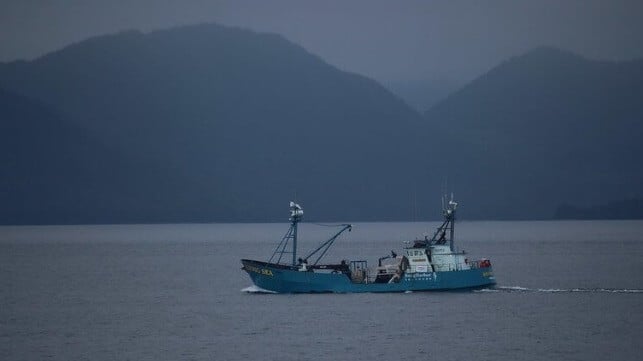Alaska's "Imploding" Fishing Industry Has Shed 38,000 Jobs

Falling revenue and rising costs have hit Alaska's fishing industry hard, according to a new study by NOAA Fisheries. In an economic review requested by fishermen and processors, NOAA found that profitability dropped by half from 2021-23, and wholesale prices dropped by a quarter in 2022-23. This left the Alaskan seafood industry with a total direct loss of $1.8 billion in 2022-3 and the loss of about 38,000 jobs.
"For many Alaskans the decline of their seafood industry affects their pocketbooks, presents food security concerns, and impacts their way of life, sense of place, community, and identity," NOAA noted. "In the face of evolving climate-driven impacts to ecosystems and fisheries in the region, these recent market disruptions undermine the capacity of all segments of the seafood industry and associated fishing communities to be resilient and survive in fisheries."
Alaskan fishermen face a confluence of challenges, including declining consumer demand; reduced purchasing by retailers, who had backstock to clear out of their freezers in 2022-23; competition from Russian fishermen, who catch the same products on their side of the EEZ line and undercut U.S. suppliers on price; and lingering economic effects of the pandemic. These impacts have meant plummeting dockside prices for many species and regions. Many Alaskan fishermen ended the 2023 season with little or no profit.
Processing plants have buckled under the same pressures: multiple facilities have been sold to new owners, temporarily closed or shut down indefinitely in fishing-dependent communities across Western Alaska, like False Pass, Chignik, King Cove, Alitak and St. Paul. These realignments have left many fishermen without a buyer for their catch, and have hit fishing towns hard. For example, the closure of the Peter Pan plant in King Cove took away about 70 percent of community tax revenue overnight.
Fishermen also have to contend with the near-collapse of many target species populations. In Western Alaska, Chinook salmon and chum salmon runs fell off by more than 80 percent in 2022. The lucrative snow crab fishery was devastated by a marine heatwave in 2018-21, leading to a fishery closure in 2022. This has left crabbers high and dry, and many have turned to shoreside employment while hoping for an improvement in conditions.
Alaska's state legislature has appointed an eight-member task force to study the "unprecedented economic implosion of our industry," as sponsor Sen. Bert Stedman told the Alaska Beacon. The federal government is also stepping in with millions in disaster-assistance funds - but only for those who have been hurt by "fishery resource disasters," not for those who are under pressure from market forces.
Top image: Joseph / CC BY NC SA 2.0
